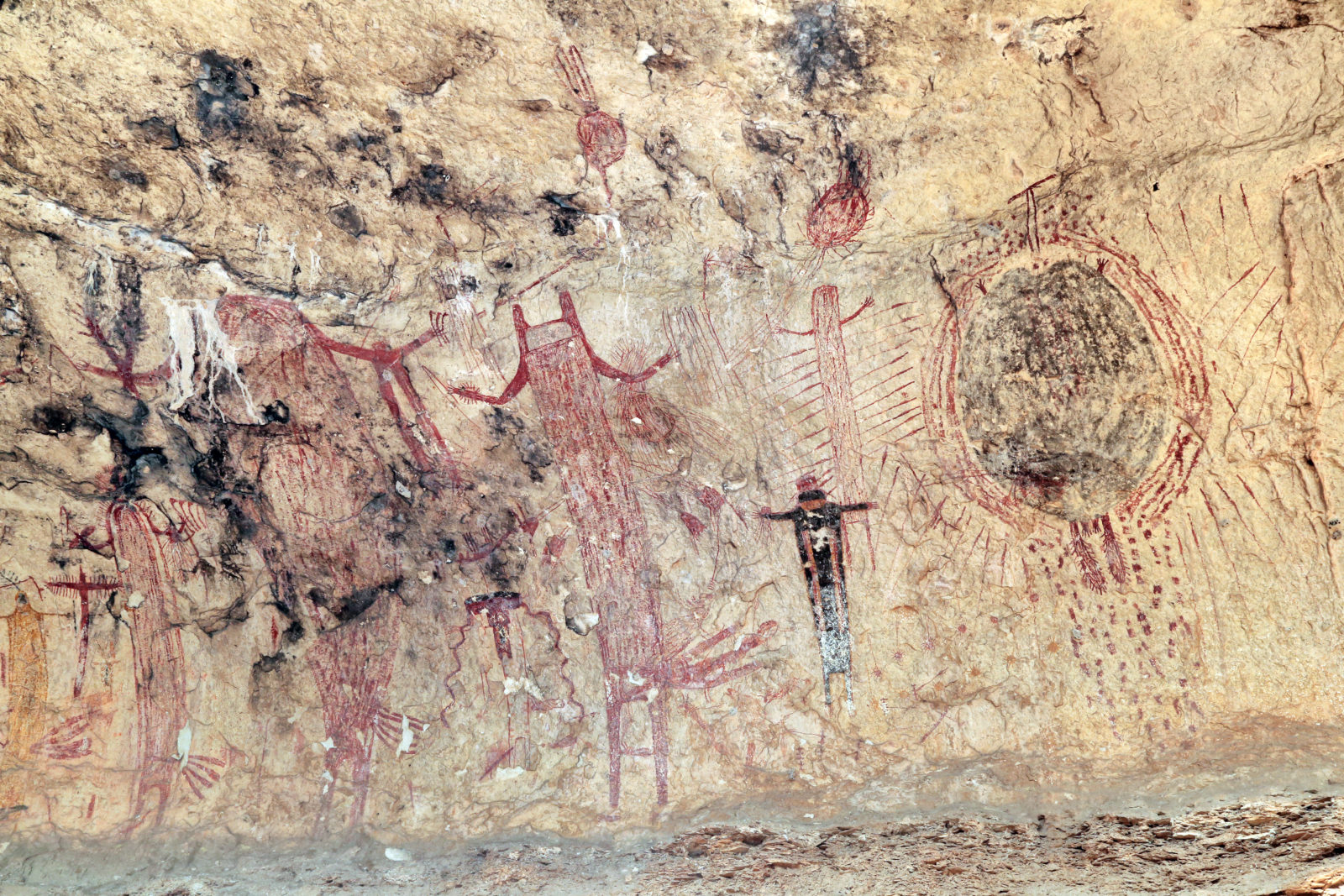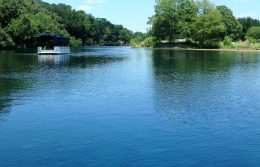Exploring Texas Rock Art
The journey back in time begins on the edge of Seminole Canyon, a few miles north of the Rio Grande and west of Del Rio. A guide from Seminole Canyon State Park & Historic Site leads a small group down a narrow path toward the floor of the canyon. Then, we wind back up into a shaded overhanging of rock.
From there we can see dozens of fading pictographs — colorful paintings of animals, ancient people, shamans, and other figures and symbols more difficult to decipher. They are part of the hidden story, told on the faces of these rocks, of the people who once populated Texas’ plains and canyons long before any European settlers arrived.

Photo by Alan Cressler
It’s a bit of a well-kept secret that Texas is home to some of the best-preserved rock art in the world. There are hundreds of sites, scattered across the state, where some of the original Native American tribes that populated Texas upwards of 5,000 years ago made paintings or carvings depicting images and scenes of mysterious origins and intent. Some believe the rock art is a kind of visual history of the people, or part of unknown religious rituals. They can be found along the Rio Grande and in the Pecos River valley, throughout the Hill Country, and even up into the Panhandle.
Over the centuries, much of this rock art has been lost to erosion or vandalism. A lot of the pictographs lie on private lands and can be difficult to access. But there are a handful of places where you can still come in contact with some of the oldest remnants of human artistic expression in the Americas. Here are a few of the best:
- Seminole Canyon State Park & Historic Site: Texas’ largest rock art site lies upriver from the Amistad Reservoir. Guided tours allow park visitors to hike down into the canyon and explore a number of caves whose walls are painted with stunning pictographs and whose floors are covered with scattered pieces of rope and other artifacts from the hunter-gatherer culture that once made this sparse, dry, difficult terrain home.
- Panther Cave: The most dramatic work of rock art in Seminole Canyon is only reachable by boat. Standing at the canyon’s confluence with the Rio Grande, Panther Cave received its name from the massive painted panther that appears on its walls. The image is so large and magnificent it can be seen from the hiking trails that run along the top of the cliffs on the far side of the canyon.
- Paint Rock: About 16 miles south of Ballinger on the edge of the Hill Country, Paint Rock sits a few hundred yards north of the Concho River. The limestone cliff stands 70 feet high and contains hundreds of pictographs depicting animal and human figures, geometric shapes, and handprints. It is estimated that some 1,500 pictographs can be found at the site, and they are estimated to be around 1,000 years old.
- The Witte Museum on the Pecos: Another way to experience Texas’ remarkable examples of rock art is to sign up for a tour offered by San Antonio’s Witte Museum, which manages its own preserve near the Pecos River.
For more on Texas’ storied past, dive into a region-by-region guide down the historic Forts Trail.
© 2018 Texas Farm Bureau Insurance



